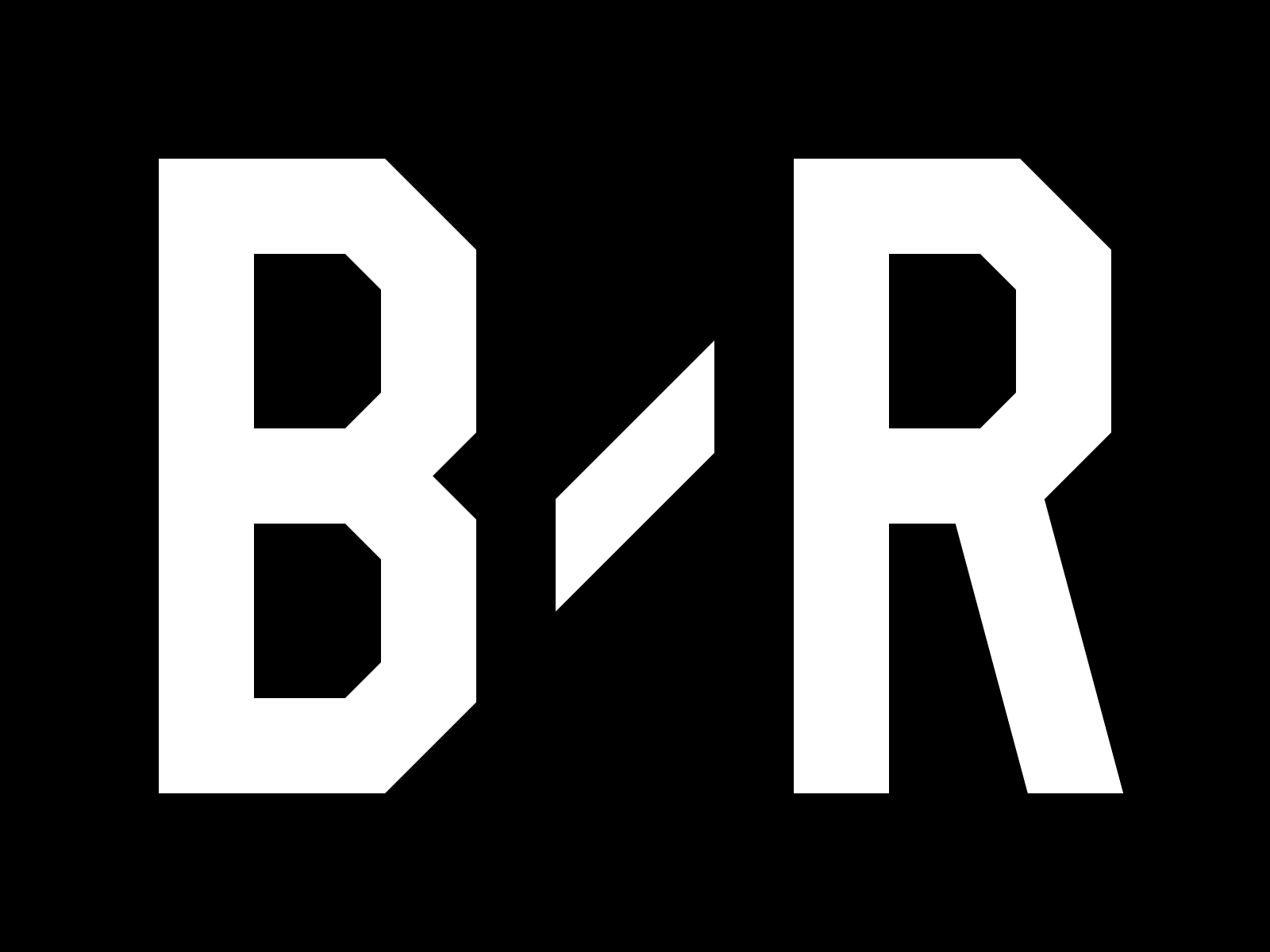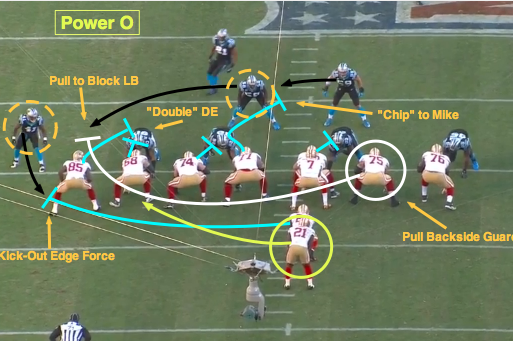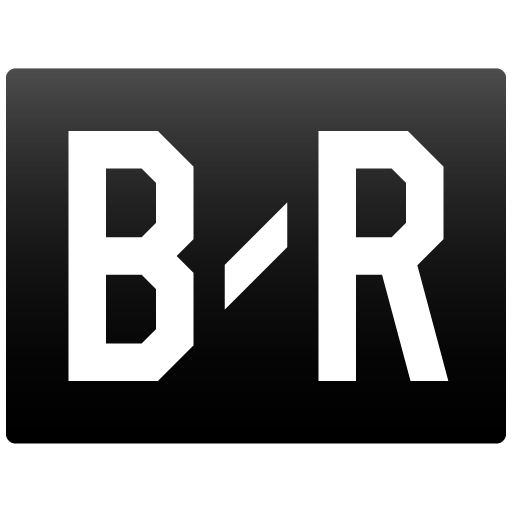In today’s installment of the “NFL 101” series at Bleacher Report, former NFL defensive back Matt Bowen breaks down the basics of the power-running game to give you a better understanding of scheme and execution at the pro level.
Click here for a breakdown of the NFL route tree.
Click here for a breakdown of the top NFL route combinations.
The power-running game in the NFL is utilized out of a variety of personnel groupings and alignments to attack downhill versus the defensive front seven.
Different than the zone-based schemes we see on Sundays, the power game is designed to create specific running lanes with lead blockers at the point of attack that work to the second level of the defense.
Today, let’s take a look at the core power concepts out of Regular/21 (2WR-1TE-2RB), Ace/12 (2WR-2TE-1RB), Tank/22 (1WR-2TE-2RB) and Posse/11 (3WR-1TE-1RB) personnel to focus on blocking schemes versus 4-3, 3-4 and Nickel fronts.
Using the All-22 coaches tape, here’s a list of the concepts we will break down:
- Power O
- One-Back Power
- Counter OF
- Lead Open
- Counter Lead
- G Lead
- Wham
- Crack Toss/(Jet)
Power O
The Power O is a classic, strong-side concept that every offense in the NFL must be able to execute versus both seven- and eight-man fronts based on the down-and-distance situation.
Also called the “Power Bob-O” (Back on Backer), the offense blocks down on the edge, leads the fullback to kick out the primary support and pulls the backside guard up through the hole to the strong (or closed) side of the formation.
Here’s an example of the Power O from the 49ers-Panthers matchup in the Divisional Playoffs with San Francisco in Tank/22 personnel (or Tank “plus” with an extra offensive lineman in the game).
The 49ers double down on the closed-side defensive end and the 3-technique defensive tackle to set the edge of the formation with the play-side guard working up to the second level (“chip”) to block Mike 'backer Luke Kuechly.
This allows the fullback to kick out the primary support player (defensive back rolled down versus Tank/22 personnel) with the backside guard pulling up through the hole to fit on the linebacker.
The 49ers create a running lane for Frank Gore to press the hole and accelerate vertically up the field. That will force the safety to make an open-field tackle in space.
From my experience in the NFL, the Power O is the most physical and violent play in the game with linebackers and safeties tracking the fullback and pulling guard to create a train wreck at the point of attack.
One-Back Power
With the amount of three-wide receiver personnel we see in today’s NFL, the one-back power has become a top concept in the running game because it targets six- and seven-man fronts in defensive sub-packages (Nickel, Dime).
Run out of the shotgun or with the running back in the “dot” (aligned directly behind the quarterback under center), the one-back power utilizes the backside guard on the pull technique (same as the Power O) to lead up through the hole.
This is an example from the Lions-Packers matchup with Posse/11 personnel on the field versus Detroit’s base nickel package (five defensive backs).
To the closed side of the formation, the tight end kicks out the defensive end with the right tackle and right guard doubling the 3-technique defensive tackle (guard will work off double-team to “chip” versus open-side linebacker).
With the center blocking back on the Nose, the open-side guard pulls to lead up through the hole versus the closed-side linebacker.
This creates a running lane inside the edge of the formation (inside of the defensive end) for Eddie Lacy to work vertically up the field. That forces the safeties (removed from the core of the formation) to make the tackle.
Remember, defenses that lean on two-deep coverage (Cover 2) in their sub-packages can struggle versus the running game out of Posse/11 personnel, as it creates a seven-man (or six-man) box up front.
Counter OF
The Counter OF gives the offense the ability to attack the open (or weak) side of the formation using the fullback and frontside guard off “counter action” in the backfield from a “Strong I” alignment.
The offense will block down on the open-side edge in the Counter OF, kick out the primary support (guard pull) and lead up through the hole (fullback) to create a running lane. That's different from the Power O as the fullback and guard switch blocking responsibilities.
Here’s an example from the Titans-Texans matchup with Tennessee in Tank/22 personnel versus Houston’s “heavy” 3-4 front (five linebackers in the game).
The Titans double the open-side defensive end in a 4i-technique (inside shoulder of the tackle) with the left guard working up to the second level to “chip” the linebacker.
With running back Chris Johnson using the counterstep (buys time for fullback to clear to the open side of the formation), the frontside guard pulls and kicks out the Will ‘backer to widen the edge.
This allows the fullback (aligned in a offset position in a “Strong I”) to lead up through the hole and fit versus the 3-4 “Jack” ‘backer to create a vertical running lane for Johnson.
Lead Open
The Lead Open is one of the most common power schemes run to the weak side of the formation out of Regular/21 and Tank/22 personnel to create a one-on-one matchup in the hole with the fullback versus the linebacker.
Also referred to as a “Pop-Out” or an “Iso," the Lead Open is run out of an “I” alignment, and it doesn’t require window dressing or disguise to execute. A straight, downhill concept that challenges the linebacker to fill the hole with speed.
Using the tape of the Vikings-Bears matchup at Soldier Field, let’s look at an example of the Lead Open out of Regular/21 personnel versus the 4-3 front.
With the Bears in an Under front (Nose aligned in a shade to the closed side of the formation), the Vikings kick out the 3-technique defensive tackle and the defensive end to the open side of the formation while doubling the Nose (left guard will work up to the Mike ‘backer).
That leaves the fullback in a one-on-one situation versus the Will ‘backer with running back Adrian Peterson pressing the hole.
And with the Bears in a seven-man front (Cover 2), Peterson can make one cut off the fullback and get through the second level of the defense to the safety support.
Counter Lead
The Counter Lead carries the same principles as the Lead Open with “counter action” in the backfield to force second-level flow on the defense.
Run out of an “I” alignment, both the fullback and the running back step to the closed side of the formation. This will force the second-level linebackers to flow (creating blocking angles for the offense) before redirecting to track the fullback.
Using an example from the Rams-Seahawks matchup, let’s break down how Seattle brought the cornerback into play to produce an explosive gain out of Regular/21 personnel in a slot formation.
With the Rams in a 4-3 Over front, the Seahawks motion the slot receiver into the core of the formation (forces CB to travel/match to coverage).
Seattle shows the counteraction in the backfield to create a blocking angle to the Mike ‘backer (guard works up to second level) as he steps to the closed side of the formation.
To the open side, the tackle kicks out the defensive end, and the slot receiver secures the edge versus the Will ‘backer. That leaves the cornerback as the “fill player” (fill downhill when coverage blocks) versus the fullback.
This allows the fullback to lead up through the hole and fit versus the cornerback with running back Marshawn Lynch cutting off the block to produce an explosive gain.
G Lead
The “G” Lead is run out of a two-back look with the frontside (or play-side) guard pulling to kick out the primary support defender and the fullback leading up through the hole.
Let’s check out an example from the Saints-Panthers matchup with Tank/22 personnel on the field versus Carolina’s 4-3 Under front.
The Saints attack the open side of the formation with the tight end blocking the defensive end and the right tackle blocking down on the 3-technique.
This allows the open-side guard (play-side guard) to pull and kick out the defensive back supporting the edge versus Tank/22 personnel.
With the fullback tracking the Will ‘backer, running back Mark Ingram can press the edge of the defense, square his pads and work vertically up the field to find running room inside of the pulling guard.
Wham (Lead)
The Wham is an inside power scheme (lead concept) with a trap block (“wham” block) on the Nose or defensive tackle depending on the front. Think of an “earhole” shot that can create an inside running lane for the fullback to lead up to the second level.
A concept that shows up often on the 49ers tape, the “Wham” requires the offense to either align a tight end/H-Back in the hole or use short, divide motion (motion to the core of the formation) to create a blocking angle to the target the Nose/defensive tackle.
Let’s check out the blocking scheme using an example from the 49ers-Rams matchup with Tank/22 personnel on the field versus a 4-3 Over front.
The 49ers use short, divide motion with the “U” tight end (second tight end in the game) to create the angle to the Nose. This allows the tight end to block down (“wham”) versus the Nose with the center working up to the second level to the fit on the Sam 'backer.
To the open side, the 49ers account for the Will ‘backer and defensive end Robert Quinn with a “fold” block or technique. In this technique, the left tackle works to the Will ‘backer with the guard replacing on the edge to wash the end up the field.
In the backfield, this is nothing more than a downhill lead scheme with the fullback targeting the Mike ‘backer and running back Frank Gore making his cut off the block.
But the key is the “wham” block. With the tight end essentially trapping the Nose at the snap of the ball, the fullback has a clear path to work to the Mike ‘backer.
Crack Toss
The Crack Toss is one of the toughest concepts to defend because gaps move from a secondary support perspective when the ball reaches the edge of the formation.
Run from a bunch alignment, the Crack Toss allows the offense to block down (or “crack”) on the edge with the play-side tackle pulling to block the cornerback in run support.
This forces the cornerback to use a “crack replace” technique (support edge when coverage blocks) and tackle.
And, as we often see, the cornerback will widen/give ground (causing a soft edge) when the play-side tackle pulls to create a running lane for the offense.
Here’s an example of the Crack Toss from the Cardinals-Seahawks matchup with Ace/12 personnel on the field for Marshawn Lynch and the Seattle offense.
With the Seahawks using motion to form a bunch alignment to the open side of the formation, the offense can crack on the edge and force cornerback Patrick Peterson to replace as the primary run-support defender.
This allows the left tackle to pull and target Peterson. That’s a favorable matchup for the Seahawks, and it creates a soft edge for Lynch.
Too often, cornerbacks will give up one-for-one and cut the tackle at the knees. That’s a win for the offense, and it doesn’t secure the edge.
In this situation, cornerbacks have to attack downhill at a 45-degree angle to squeeze/restrict the edge and force the ball back inside to the defensive pursuit.
Crack Toss (Jet)
NFL offenses will use wide receiver jet motion on the Crack Toss to force strong-side flow while removing the cornerback in coverage to attack the edge of the defense.
Let’s look at how the Bears used jet motion with wide receiver Alshon Jeffery while running the Crack Toss versus the Packers out of Posse/11 personnel.
Off the jet motion, quarterback Josh McCown can show the ball to Jeffery through the mesh point (forcing the linebackers to flow) before pitching to running back Matt Forte on the toss.
To the open-side edge, the two receivers in a stack alignment crack inside with the left tackle pulling to block the nickel back and widening the edge for Forte.
Using the jet motion forces the defense to read through the mesh point (quarterback can hand the ball off to the wide receiver) before pursuing to the play-side toss.
And I’m seeing it more often on the tape as a complement to the base Crack Toss scheme in the NFL.
Seven-year NFL veteran Matt Bowen is an NFL National Lead Writer for Bleacher Report.



Read 0 Comments
Download the app for comments Get the B/R app to join the conversation